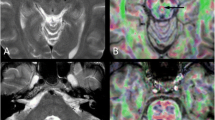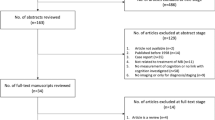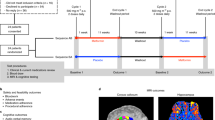Abstract
Medulloblastoma is an aggressive childhood cerebellar tumor. We recently reported a mouse model with conditional deletion of Patched1 gene that recapitulates many characteristics of the human medulloblastoma. Qualitative symptoms observed in the mouse model include irregular stride length, impaired cranial nerve function and decreased motor coordination and performance. In our current study, several quantitative behavioral assays including a mouse rotarod, a forced air challenge, a screen inversion test, a horizontal wire test, and stride length analysis were evaluated to determine the most sensitive and cost-effective functional assay for impaired neuromotor behavior associated with disease progression. Magnetic resonance imaging (MRI) was used to confirm and monitor tumor growth and as an anatomical biomarker for therapeutic response. Wild type mice or medulloblastoma-prone, conditional Patched1 knockout mice were observed by behavioral assays and MRI from postnatal weeks 3–6. Bortezomib treatment was administered during this period and therapeutic response was assessed using cerebellar volumes at the end of treatment. Of the behavioral tests assessed in this study, stride length analysis was best able to detect differences between tumor-prone mice and wild type mice as early as postnatal day 37 (P = 0.003). Significant differences between stride lengths of bortezomib treated and control tumor-bearing mice could be detected as early as postnatal day 42 (P = 0.020). Cerebellar volumes measured by MRI at the end of treatment validated the therapeutic effects seen by behavioral tests (P = 0.03). These findings suggest that stride length analysis may serve as one of the more sensitive and cost-effective method for assessing new therapeutic compounds in this and other preclinical model of brain tumors.





Similar content being viewed by others
References
Arenkiel BR, Tvrdik P, Gaufo GO, Capecchi MR (2004) Hoxb1 functions in both motoneurons and in tissues of the periphery to establish and maintain the proper neuronal circuitry. Genes Dev 18:1539–1552
Coughenour LL, McLean JR, Parker RB (1977) A new device for the rapid measurement of impaired motor function in mice. Pharmacol Biochem Behav 6:351–353
Crawford JR, MacDonald TJ, Packer RJ (2007) Medulloblastoma in childhood: new biological advances. Lancet Neurol 6:1073–1085
Facklam M, Schoch P, Bonetti EP, Jenck F, Martin JR, Moreau JL et al (1992) Relationship between benzodiazepine receptor occupancy and functional effects in vivo of four ligands of differing intrinsic efficacies. J Pharmacol Exp Ther 261:1113–1121
Fomchenko EI, Holland EC (2006) Mouse models of brain tumors and their applications in preclinical trials. Clin Cancer Res 12:5288–5297
Gilbertson RJ (2004) Medulloblastoma: signaling a change in treatment. Lancet Oncol 5:209–218
Hamilton SR, Liu B, Parsons RE, Papadopoulos N, Jen J, Powell SM et al (1995) The molecular basis of Turcot’s syndrome. N Engl J Med 332:839–847
Hamm RJ, Pike BR, O’Dell DM, Lyeth BG, Jenkins LW (1994) The Rotarod test: an evaluation of its effectiveness in assessing motor deficits following traumatic brain injury. J Neurotrauma 11:187–196
Hann B, Balmain A (2001) Building ‘validated’ mouse models of human cancer. Curr Opin Cell Biol 13:778–784
Lafay-Cousin L, Strother D (2009) Current treatment approaches for infants with malignant central nervous system tumors. Oncologist 14(4):433–444
Polkinghorn WR, Tarbell NJ (2007) Medulloblastoma: tumorigenesis, current clinical paradigm, and efforts to improve risk stratification. Nat Clin Pract Oncol 4:295–304
Sakakibara T, Xu Y, Bumpers HL, Chen FA, Bankert RB, Arredondo MA et al (1996) Growth and metastasis of surgical specimens of human breast carcinomas in SCID mice. Cancer J Sci Am 2:291–300
St Clair WH, Adams JA, Bues M, Fullerton BC, La Shell S, Kooy HM et al (2004) Advantage of protons compared to conventional X-ray or IMRT in the treatment of a pediatric patient with medulloblastoma. Int J Radiat Oncol Biol Phys 58:727–734
Taniguchi E, Cho MJ, Arenkiel BR, Hansen MS, Rivera OJ, McCleish AT et al (2009) Bortezomib reverses a post-translational mechanism of tumor genesis for patched1 haploinsufficiency in medulloblastoma. Pediatr Blood Cancer 52(2):136–144
Waza M, Adachi H, Katsuno M, Minamiyama M, Sang C, Tanaka F et al (2005) 17-AAG, an Hsp90 inhibitor, ameliorates polyglutamine-mediated motor neuron degeneration. Nat Med 11:1088–1095
Acknowledgments
This work was supported by The National Brain Tumor Foundation and the St. Baldrick’s Foundation. We thank Kristine S. Vogel, Wouter Koek, Benjamin R. Arenkiel, and Linda M. McManus for ideas, advice and guidance on these studies.
Author information
Authors and Affiliations
Corresponding author
Electronic supplementary material
Below is the link to the electronic supplementary material.
Rights and permissions
About this article
Cite this article
Samano, A.K., Ohshima-Hosoyama, S., Whitney, T.G. et al. Functional evaluation of therapeutic response for a mouse model of medulloblastoma. Transgenic Res 19, 829–840 (2010). https://doi.org/10.1007/s11248-010-9361-1
Received:
Accepted:
Published:
Issue Date:
DOI: https://doi.org/10.1007/s11248-010-9361-1




